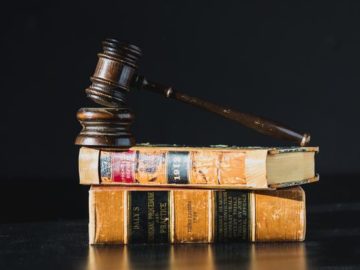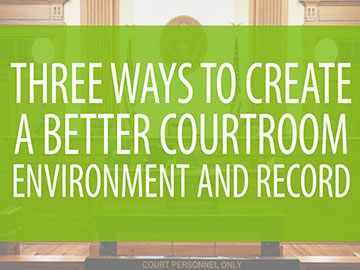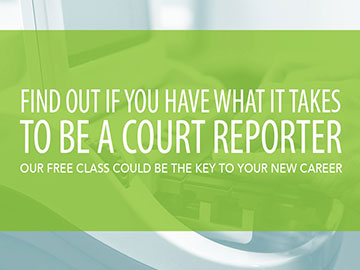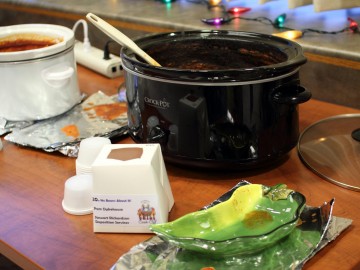Why your deposition videographer needs the right equipment

-
 Posted by
stewartrichardson
Posted by
stewartrichardson
- Posted in Blog
Everything that is spoken during a deposition will be written down and delivered to you in a transcript. And while crucial, transcripts are text and don’t tell the full story of the proceedings. You’ll never see the movements of a witness in a transcript. You’ll never be able to study the crucial body language – like a two-minute pause before an answer, a head movement toward an attorney or an awkward hand gesture – that could show you more about the testimony than text ever could. “Video shows you the emotion of a witness,” Andy Grove, the video production manager at Stewart Richardson Deposition Services, said. “Attorneys often want videotape because they think it helps them tell if someone is telling the truth or not.”
As a result, a video deposition can provide enormous value to any attorney attempting to receive the best possible review of what transpires during a proceeding. It’s one of the most important additions you can make to best prepare for an effective deposition. However, without high-quality standards, a video deposition can fall short of your goals. With inadequate equipment, a videographer may tarnish the finished product with poor audio or image quality and greatly undermine the value of having a video record. In order to avoid these major setbacks, ask a videographer if he or she has the right equipment to meet the following standards set forth by the National Court Reporters Association (NCRA).
Camera
A videographer must use a camera with the following features:
The ability to change the audio levels manually
A lens with a minimum focal length ratio of 10:1
An image resolution that is at least 350 lines of horizontal resolution
Lights
Before a videographer begins recording, they have to get the lighting right. Videographers should assess the room for the correct balance of color. They should also eliminate any backlight that may have a weak effect on the video image. The lighting in the room cannot have any shadows or other lighting effects that may distort the image of the deponent.
Audio
The court reporter must be provided with an audio recording of the deposition after the proceeding is over so that the transcript agrees with the audio recording. A videographer must use at least four microphones for the duration of the deposition. Three of the microphones must be specifically placed to record the deponent, the first direct examiner and the first cross-examiner. At Stewart Richardson Deposition Services, our videographers are instructed to use a lavalier microphone and hook it to the collar of the each person whose voice we intend to capture. Before the start of the deposition, the videographer needs to adjust the audio levels for each individual that was given a microphone.
Other Equipment
If a videographer decides to use a stand, they must use a fluid-head tripod. A fluid-head tripod will eliminate sudden movements, vibrations and other actions by the videographer that could distort the image.
Camera Procedures
The position of the camera can be extremely important. A videographer must position the camera lens at the deponent’s eye level. The camera must also have a clear view of the following:
A deponent’s hand and face during the oath
The presentation of the exhibits or documents
The document that a deponent reads and a view of the deponent while he or she reads it
A videographer should only zoom in on an image or use other camera techniques if it is absolutely necessary. Whenever there is a break, a quality videographer will review the previous recording to ensure audio and visual quality. Any recording device should not exceed two hours.
Non-Equipment Procedures
Before the deposition begins, the videographer must inform everyone in the room of all procedures such as shooting styles and camera positions. The videographer must also know which exhibits will be recorded. To prevent distractions, the videographer must inform everyone in the deposition to not use their cell phones or other devices that may cause noise. Before recording the opposing attorney, the videographer must first record spoken deposition identification – which includes the time and date of the deposition, a deponent’s full name, the party of the deposition, the caption, the court in which the action has been filed and the case number. Other identification information that must be recorded include the address of the deposition, the name and business address of the videographer and the court reporter and the identity of anyone else present.
During the deposition, the videographer should keep a log that includes the start and stop time of each media unit, everything on and off the record, everything on and off the video, attorney content, the start of direct and cross examinations and the run time of the deposition.
After the deposition, the videographer needs to keep the audio and video recordings confidential. Because the videographer is neutral, he or she should review the recordings to make sure the audio and video is consistent for both parties.
Once the deposition is finished, the videographer and court reporter must synchronize both the video deposition and the transcript. Video-to-text synchronization allows the viewer to read the transcript and observe the testimony on the same screen. You can also easily access any clip or segment just by searching certain words or phrases.




















